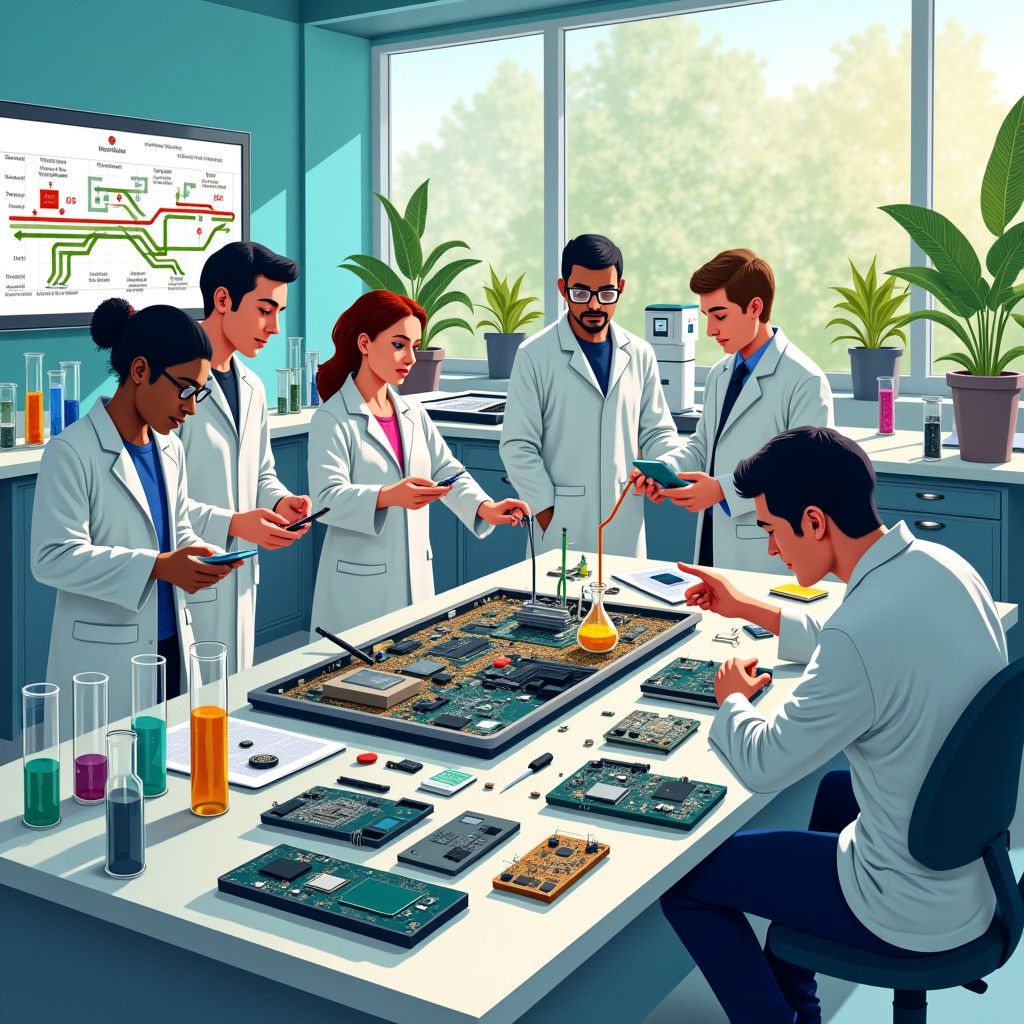By Jack Thomas
The increasing volume of electronics waste, known as e-waste, has become an urgent global issue. With approximately 50 million tons discarded each year and a mere 20% being effectively recycled, finding solutions to manage this waste is critical. Researchers at Cornell University have developed a pioneering method that not only recovers gold from e-waste but also repurposes it to help mitigate greenhouse gas emissions.
The Urgency of Addressing E-Waste
As technology rapidly advances, the lifespan of electronic devices continues to shrink. This leads to a cycle of disposability that exacerbates the accumulation of e-waste. Improper disposal releases hazardous substances, such as lead and mercury, into the environment and squanders valuable metals, including gold, silver, and rare earth elements.
The economic implications of e-waste are significant; recovering precious metals can reduce reliance on traditional mining, conserve energy, and generate job opportunities within the recycling industry. Also, addressing e-waste aligns with the principles of a circular economy, promoting the reuse of materials to minimize waste.
Uncovering Hidden Wealth in E-Waste
Experts estimate that a ton of e-waste contains at least ten times more gold than a ton of traditional gold ore. Despite this richness, the extraction processes have conventionally employed harmful chemicals like cyanide. With projections indicating that e-waste could reach an overwhelming 80 million metric tons by 2030, sustainable methods to recover these valuable materials have never been more essential.
A Revolutionary Chemical-Free Approach
At the heart of Cornell’s new method is a material known as vinyl-linked covalent organic frameworks (VCOFs). This innovative technique provides a safe alternative to traditional extraction methods by eliminating hazardous chemicals. The results have been impressive; researchers have managed to capture an astonishing 99.9% of gold from circuit boards in discarded electronics without mixing it with other metals, such as nickel or copper.
More notable is the dual environmental benefit of this method. After successfully recovering gold, the VCOFs enable the use of the metal as a catalyst to convert carbon dioxide (CO2) into valuable organic chemicals. This process addresses one of the main contributors to climate change, CO2 emissions, while simultaneously creating materials for industrial use.
Towards a Sustainable Future
While this groundbreaking method signifies an important advancement in the recycling of electronics, it is crucial to scale up such technologies to achieve a broader impact. Collaboration among governments, corporations, and consumers is essential for effective e-waste management.
Government legislation must enforce stricter e-waste management and recycling policies to encourage compliance among manufacturers and consumers. Electronics producers have a responsibility to design products that prioritize recyclability, alongside investing in take-back programs. Meanwhile, public education on the vital nature of recycling electronics can increase participation in recycling initiatives.
Conclusion
The innovative approach of extracting gold from electronic waste while also tackling CO2 emissions exemplifies how science and technology can address pressing environmental challenges. As the amount of e-waste continues to swell, so does the need for sustainable solutions that not only protect our planet but also secure valuable resources for future generations. By transforming discarded electronics into valuable materials and actionable climate solutions, we can facilitate the shift towards a sustainable circular economy.












